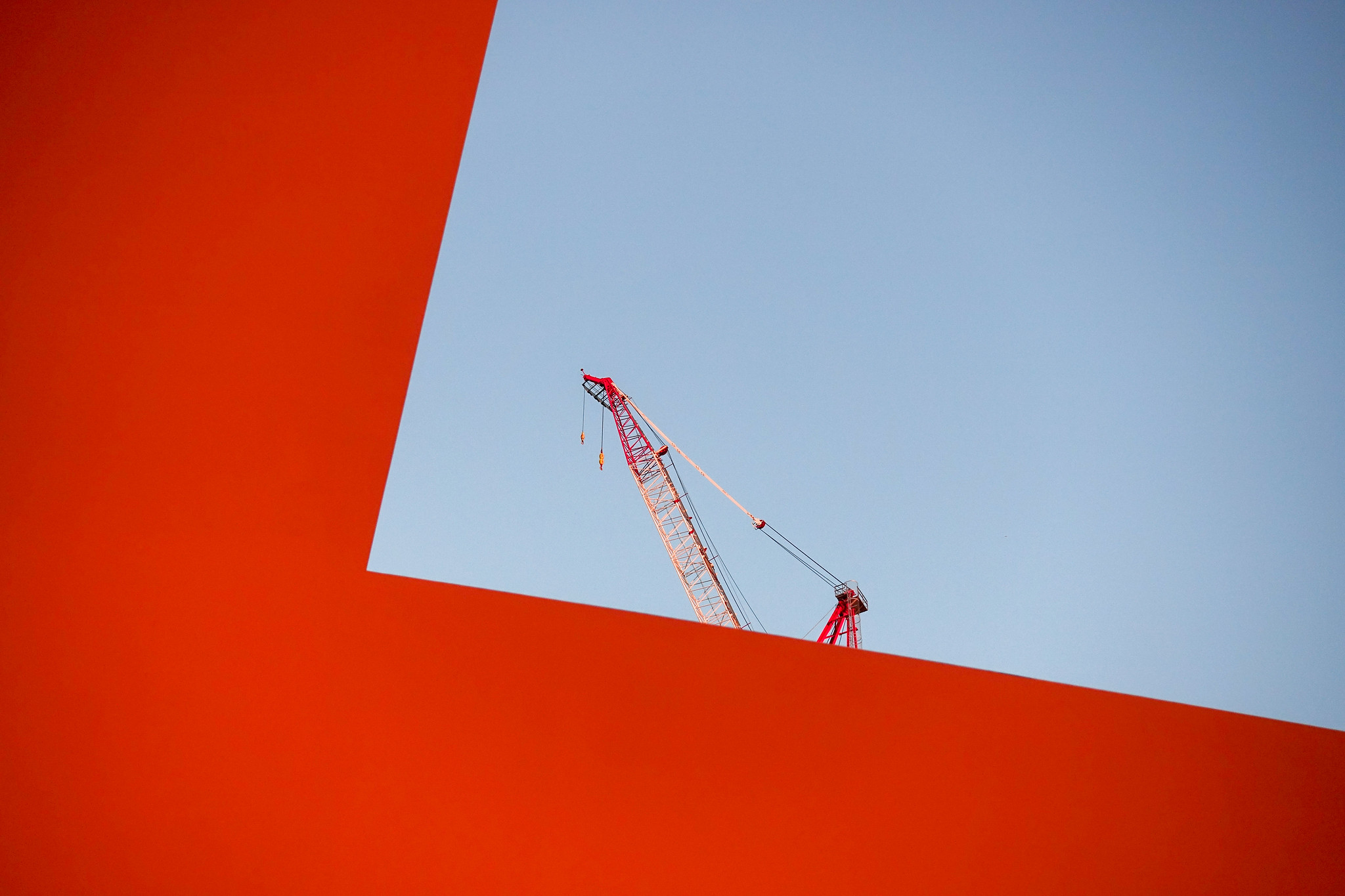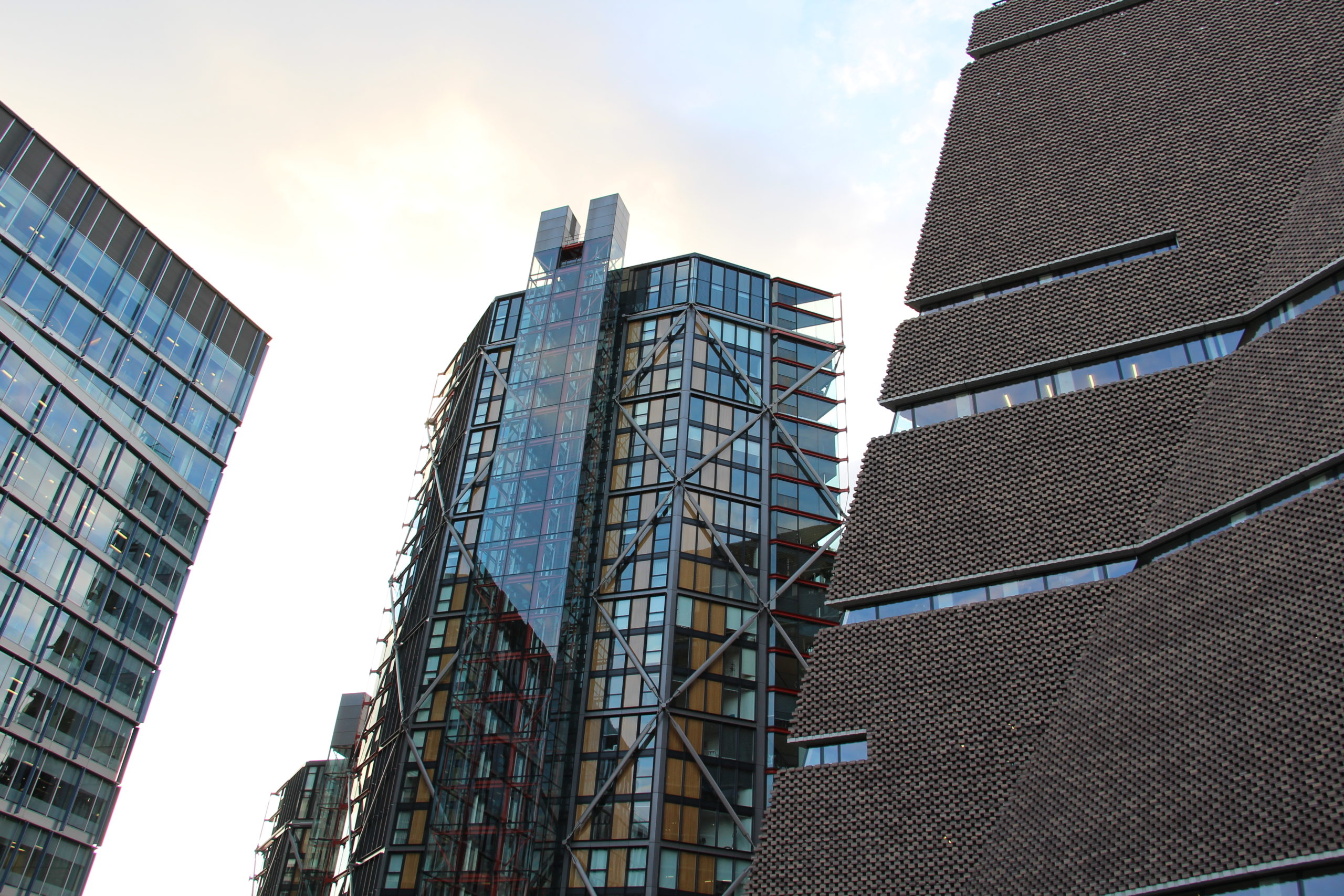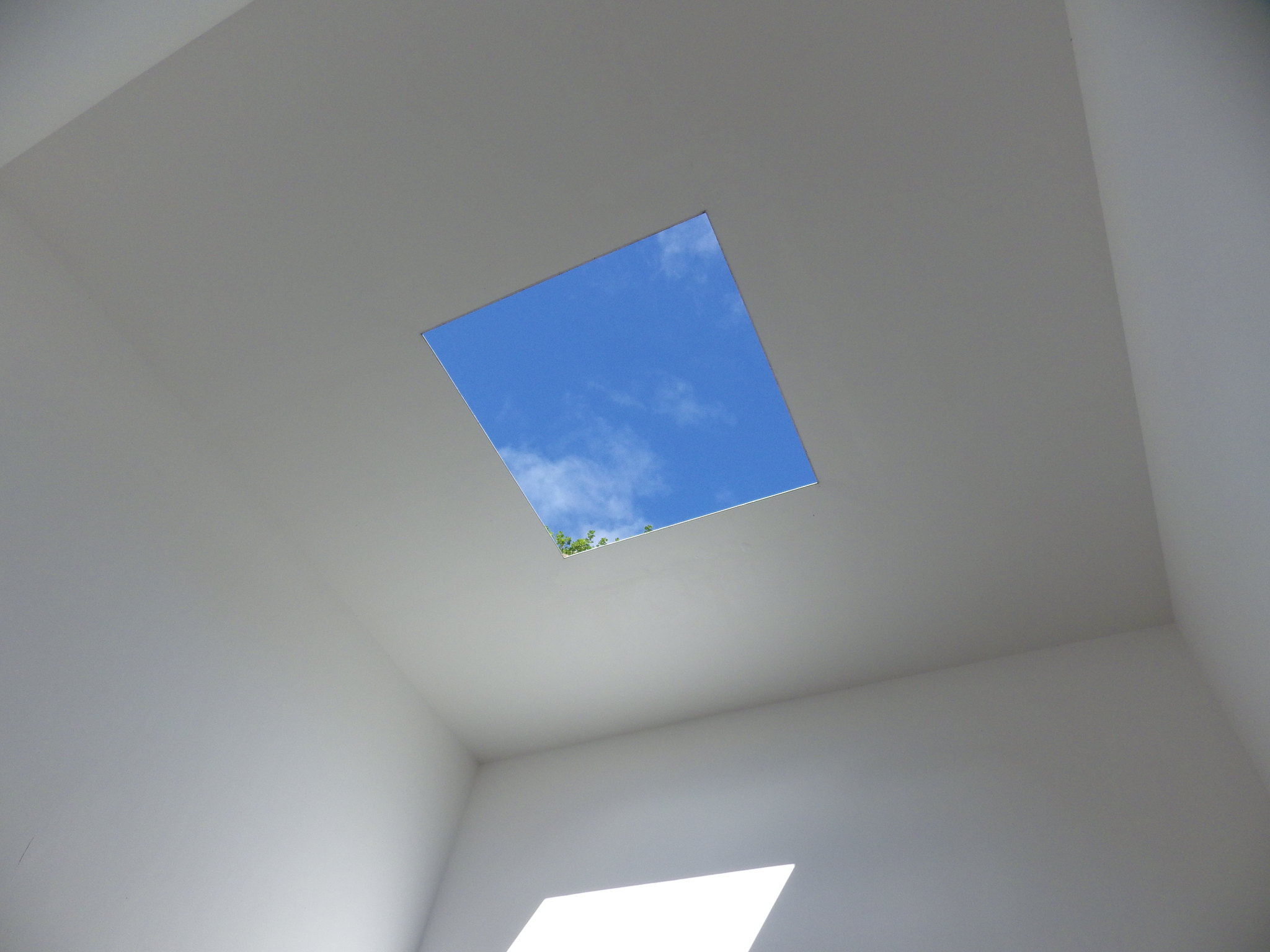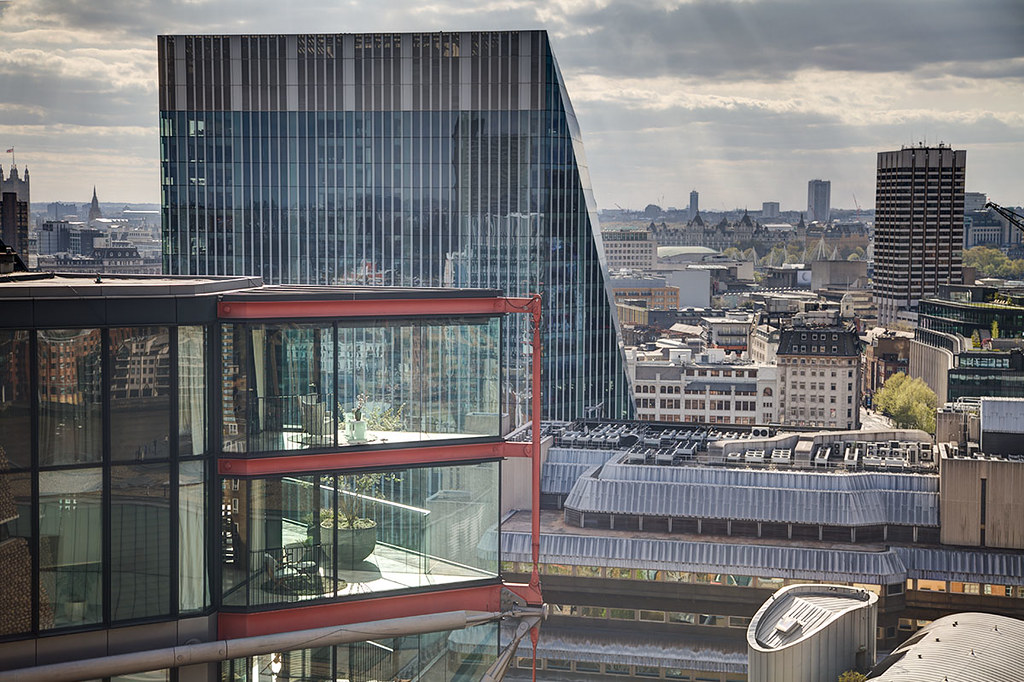
In November 2018, artist Max Siedentopf added a new temporary artwork to Tate Modern’s collection. Pairs of binoculars adorned the railings of the Blavatnik Building viewing platform, through which observers could take a closer look at the building’s next door neighbours—those living in the multi-million-pound development Neo Bankside. The piece was satirically titled Please Respect Our Neighbours’ Privacy, and its installation was inspired by legal action between Tate and residents of the luxury development.
In 2017, five residents of Neo Bankside began a privacy dispute against Tate Modern. The Switch House viewing platform provided visitors with a direct line of sight into the Neo penthouses and apartments. Residents felt like they were living in a fishbowl; during Tate’s opening hours, according to one claimant, they were “more or less constantly watched, waved at, photographed and filmed”. It was, they claimed, a nuisance and a detriment to their quality of life.

Judgement in favour of Tate Modern in February, after three years of back-and-forth in courts and appeals, seemed to finally put the issue to bed. Mr Justice Mann threw out the claims of nuisance, stating that residents living in flats with floor-to-ceiling windows had “created their own sensitivity” in a “self-induced exposure to the outside world”. Neo Bankside’s website still boasts that the development has an “unrivalled location” beside Tate Modern on the Thames. With their desire for proximity to Tate and the luxury it signals, but without the public the gallery exists to serve, residents of the development could be accused of wanting to have their cake and eat it. At the heart of these demands is the question of who has the right to an unencumbered view of the capital. Is it individuals looking out from penthouses, or any member of the public who desires it?
“At the heart of the residents’ demands is the question of who has the right to an unencumbered view of the capital“
The hostility of the proceedings might obscure the fact that the relationship between Tate and the surrounding luxury developments is one of symbiosis. Neo Bankside would not exist if projects such as Tate Modern hadn’t made the area desirable to investors back in 2000. When Tate bought the disused Bankside Power Station, the area consisted primarily of old industrial buildings and a council housing surplus. According to Otto Saumarez Smith, assistant professor in architectural history at the University of Warwick, “the idea of shifting London’s cultural geography south of the river would have felt quite progressive—even radical—then. It was part of a deindustrializing landscape in a way that is hard to remember now.” Sitting alongside the newly-reconstructed Globe theatre, Tate solidified Southwark’s reputation as a new globally renowned cultural hub, giving the green light for investors to pour in money for private housing to serve a new type of Southwark resident and cultural consumer.

Housing activists in Southwark have long accused Tate Modern of being active participants in gentrification. In 2007, an ex-council flat on the Pullens Estate in Walworth cost £270,000. In 2015, an ex-council home in Borough was put on the market for £3.4 million. Chris, an activist with Southwark Notes, remembers that in 2007, “Tate Modern supported the Land Lease Elephant Park development, built on top of the Heygate Estate, and submitted comments to the planning documents.” The development knocked away over 1,100 council homes but Tate’s comments noted the potential for including public art in the project that would replace the homes; it would become a new luxury retail and housing space.
For Southwark Notes, Tate Modern’s continued sponsorship of local art projects amounts to the replacement of people with art, given that the spaces cleared for these new works are often sites of ongoing displacement. Walking from Tate to Southwark tube station, the hallmarks of gentrification are obvious. From the quiet of the pristine, deserted streets at night—even before this current lockdown—to the ubiquity of chain restaurants, and the constant presence of cranes in the sky—those symbols of relentless construction and deconstruction. Perhaps the crowds at Tate Modern, until recently so casually able to observe the homes of its wealthy neighbours, serve as the only indication for Southwark’s newer residents that they live in the centre of a city consisting of people, rather than a sleepy suburban retreat.

The conflicts that played out between Tate and its neighbours are mirrored elsewhere. In New York James Turrell’s installation, Meeting (1980–1986) at MoMA PS1 in Long Island City, Queens, gives viewers rare access to a view of an empty, uninterrupted New York skyline. Turrell is an artist who works with light and space, cutting apertures out of ceilings to give access to eternal, sprawling skies. The focused cut-out emphasizes a rimless infinity, and the silence and stillness of the observation room changes the feeling of the passage of time.
However in January 2019, visitors to the installation began to notice a change in scene; in the corner of the viewfinder in the ceiling that Turrell had made, scaffolding for a nearby development was clearly visible. At Turrell’s request, MoMA closed the space until the scaffolding was removed again. It wasn’t the first time this had happened to Turrell; in 2007, he declared his piece Tending, (Blue) (2003) at the Nasher Sculpture Center in Dallas “ruined” when the height of nearby luxury condos was doubled, blocking the view from the aperture. The existence of the building works here, like Neo by Tate, puts a price tag on a piece of sky, creating competition for access between wealthy private residents, artists and the general public.
“The existence of the building works puts a price tag on a piece of sky, creating competition for access“
In the global phenomenon of culture-led regeneration, from Bilbao to Glasgow, London to New York, the coming of a new gallery is closely followed by high-end retail and glassy housing. In the 1980s, New York Magazine named Long Island City, with its radical, collective art space PS1, as “the next SoHo”—in other words, the latest area of New York deemed previously uninhabitable to be rendered desirable by artists and creative institutions.

MoMA’s acquisition of PS1 in 2000 solidified the genteel remaking of the neighbourhood where Amazon recently hoped to build its New York offices (this plan was foiled last year by sustained community organizing). PS1 re-opened under the MoMA name at the same time as finishing touches were being added to Tate Modern, and the Millennium bridge was built to connect it to the financial power of the city. In Southwark as in Queens, galleries created the residents and the conditions for development that would later become threats to their artworks, and to public space.
During the boredom of lockdown that many are now experiencing, to look idly out of the window is a widespread impulse. What views will people look out to? The sky outside is rarely edgeless for those living in cities, where housing and paused building work become an intrinsic part of the landscape. Perhaps the residents of Neo Bankside are looking out and watching the sky, too. Perhaps they are finally enjoying their view of the city and of Tate. Now, at last, they can watch without being watched.





